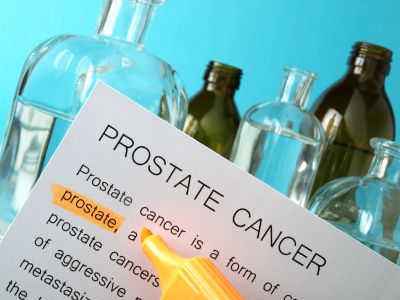Healthy Eating Prostate Cancer
Healthy Eating Prostate Cancer
The blue ribbon cause
You would have to live in a cave not to have seen the folded pink ribbon symbolizing the hope for the discovery of a cure for breast cancer, a disease that is devastating the female half of our society. However, much less commonly seen is its masculine corollary, a folded light blue ribbon for prostate cancer, a disease that already affects a large percentage of the male population.
In case you don’t know, the prostate gland is part of the reproductive system in males. It is small, only the size of a walnut, but it is important because it produces a fluid that is needed for sperm to travel during intercourse. Although a man is more likely to develop cancer of the prostate after the age of 65, this particular cancer can occur at any age. The good news is that if the cancer is detected before it metastasizes (spreads to other parts of the body), the survival rate is very high.
Do they know why men get it?
As with any cancer, no one knows for sure, but most health experts believe that lifestyle choices have a lot to do with the development of all types of cancer. Since it is related to reproduction, it would also make sense that prostate cancer is affected by hormone levels in a man’s body.
Other factors that may correlate with the likelihood of developing prostate cancer are family history and ethnic background. Men of African American heritage at are a higher risk of getting prostate cancer than men of Caucasian descent.
Lifestyle can make a difference
Since most health experts believe that lifestyle factors such as diet and exercise can affect your risk of developing cancer, it makes sense to do what you can to help your body avoid trouble. Most of these recommendations are good healthy eating strategies for anyone to follow, regardless of your cancer risk!
Here is a list of some recommendations that may help:
--Get tested by your doctor, especially if you are in one of the groups who are at a higher risk, or if you have persistent symptoms.
--Eat colorful fruits and vegetables, particularly tomatoes and tomato sauce, which contain a phytonutrient, called “lycopene” that has been linked with lowering the risk of developing prostate cancer. It is also found in watermelon, papaya and pink grapefruit.
--Choose fiber-rich foods since these help your body to remove excess hormones and toxins from your system.
--Cut down on red meat consumption. Even though you have heard that “real men don’t eat quiche,” there are a lot great protein sources that you can include in place of the red meat in your diet. Over consumption of red meat has been correlated with a higher risk of developing cancer, in addition to other health problems.
--Eat fish once or twice a week, especially smaller species, which will have fewer of the toxins than their larger relatives.
--Consider taking a high-quality multivitamin to fill in the gaps that may exist in your nutritional status. All the vitamins and minerals work together to support your immune system to keep you healthy and cancer free, but if you are deficient, you may increase your risk of becoming ill.
--Use dairy products sparingly, since too much calcium and animal fats may contribute to your chance of developing cancer of the prostate.
--Drink green tea, as studies have shown that this popular beverage may actually help your body fight cancer.
--Get some moderate exercise each day, since it has been shown that aerobic activity reduces your chances of getting prostate cancer.
Symptoms
It would be remiss to discuss this topic without providing a list of warning signs or symptoms. Most of the symptoms are related to changes noticed during urination.
--Trouble with starting urination or stopping at will
--Frequent urination, particularly at night
--Painful urination, such as a burning sensation
--Blood in the urine or blood in the semen
--Weak urine flow
--Problems getting or maintaining erection
--Pain during intercourse
--Pain in the lower back, thighs or hips
What you can do
Whether you have just been diagnosed with prostate cancer or are in one of the high-risk groups, or just want to reduce your risk, it would be helpful to implement the lifestyle changes listed above. You cannot change your family history or your ethnicity, but you do have some say about the food you eat and how active you are each day.
Every time you make a better healthy eating choice, you will help yourself to feel better and live longer.


